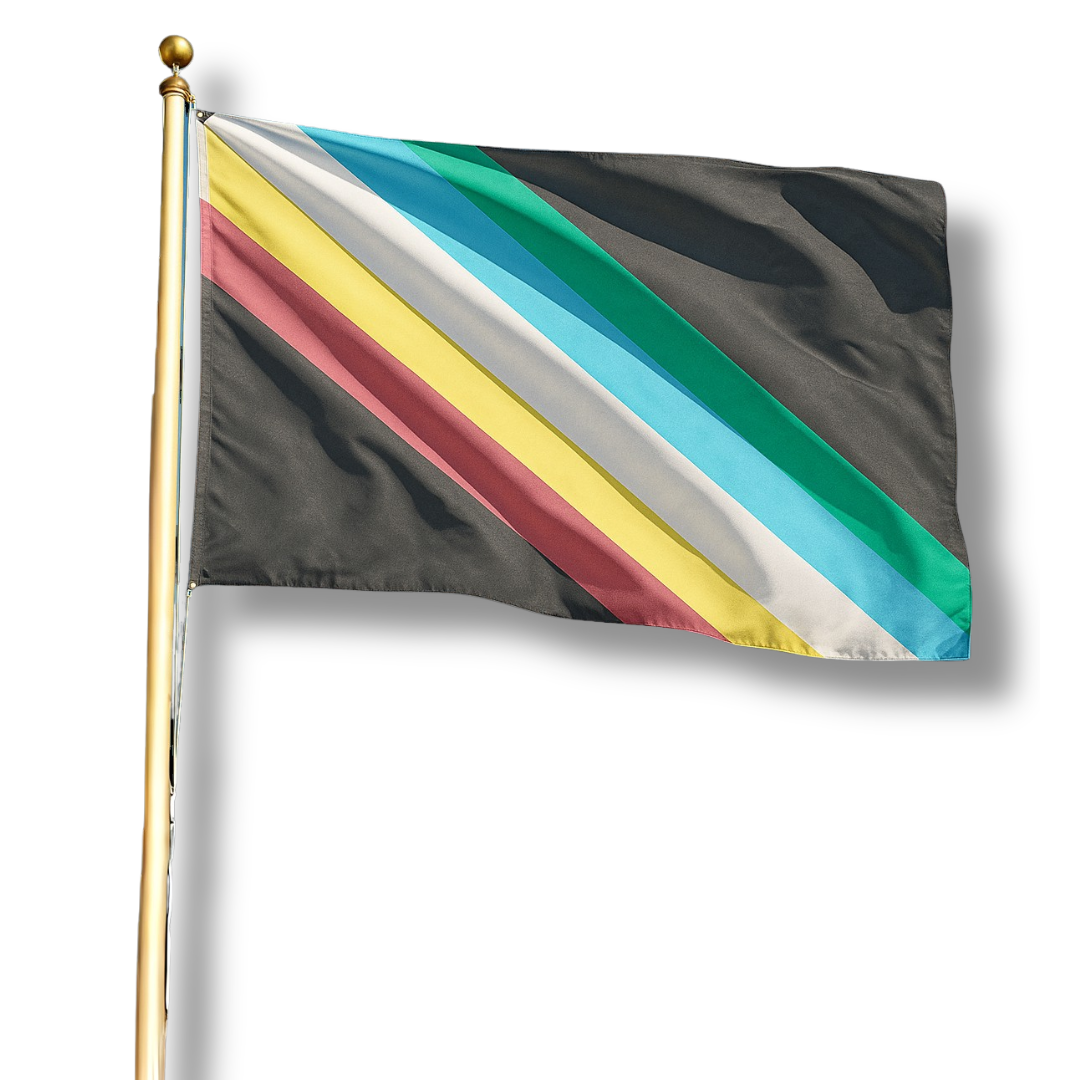Disability Pride Month not only celebrates people with disabilities, their identities, their culture, and their contributions to society but also acts as a moment to change the way people think about and define disability.
🔍 In this blog, you’ll discover:
🏳️🌈 What the Disability Pride Flag really means Jump to Flag Meaning
💡 Everyday innovations and the curb cut effect
💬 Why “we’re all temporarily able-bodied” rings true
🏠 How COVID revealed the power of flexible, inclusive design
🌍 Why accessibility benefits everyone—not just disabled people
💡Accessibility and Everyday Innovations Used By All
Recently, Chronically Jenni, a content creator spreading awareness and helping others with EDS/HSD, POTS, and CSF leaks, shared a reel looking at how universal design not only uplifts the disabled community but enriches life for everyone.
🌍What Is Universal Design?
Universal design goes beyond mere compliance; it’s a proactive approach to creating products, spaces, and experiences that are usable by the widest range of people. By anticipating diverse needs from the outset, we avoid costly retrofits and unlock innovations that benefit everyone right from the start.
Here are some of the everyday items Jenni highlights in her viral reel, “7 Everyday Hacks You Wouldn’t Have Without Disabled People!”, which were used for accessibility before their current everyday use:
- Curb Cuts*. Designed for wheelchair users, now indispensable for cyclists, parents with strollers, and travellers with luggage.
- Electric Toothbrushes. Made for those with limited grip or coordination; today, a bathroom staple.
- Text-to-Speech and Voice Assistants. Created for blind people and those who struggle with mobility; now many of us use them to set timers.
- Velcro®. Used in disability care settings for ease of fastening long before it appeared on school shoes and bags.
- Audiobooks. Originating on cassette for blind readers; now a go-to for multitasking and relaxation.
- Automatic Doors. Hands-free entry for all, born from access needs.
- Subtitles & Captions. Created for Deaf and hard-of-hearing audiences; now aiding language learners, commuters, and silent-mode viewers.
*Bonus fact: The curb cut effect is a subgroup of universal design, its effect is often unintentional rather than purposeful, but results in a similar outcome i.e. a design that creates or improves accessibility to all people regardless of ability or disability.
💬“We’re All Temporarily Able-Bodied”
One reel commenter said, “We are all only temporarily able-bodied,” mirroring a sentiment shared by many creators in the disabled community who often note that disability is the “only marginalised group we can all become a member of at any time in our lives”. In fact, disabled people currently make up 15% of the world’s population (fun fact: the author of this post is also part of this group).
Other commenters shared personal experiences which remind us that designing for disability powers innovation and convenience, and that when we design for the margins, we expand opportunities for all.
“I remember my brother telling us he’d seen a gadget on ‘Tomorrow’s World’ which disabled people would be able to use to change the channel on the TV without having to get up and go over to the TV to change it!.”
“Glasses became so normalised that they’re not really considered a disability anymore.”
“My grandmother had macular degeneration and was mostly blind. She used to order books for years and years. I remember them coming as cassette tapes. Somehow each tape had 4 tracks on it because one book would be like 4-5 tapes. Now I use audible almost every night to fall asleep.”
“Texting on cell phones! It started with a device for the Deaf/HH that only texted (the side kick is an example) and you had to have a separate phone and phone plan.”
🏠COVID and the Urgency of Inclusive Work
During the pandemic, remote work, flexible schedules, and virtual meeting platforms became mainstream virtually overnight, changes many disabled workers had advocated for years. The rapid shift underscored that inclusive practices aren’t just possible, they’re advantageous for productivity, work–life balance, and mental health for all employees.
Which brings us back to the value of universal design principles such as equitable use, flexibility, and simple, intuitive operation, all of which drive solutions that empower both those with and without disabilities.
Call to Action
This Disability Pride Month, let’s commit to universal design wherever we have the opportunity to influence or act. Create designs that foresee diverse needs and provide solutions that serve everyone from day one, not as an afterthought.
🏳️🌈The Disability Pride Flag: A Symbol of Inclusion
If you came from our social media post to find out the flag’s meaning, here it is:
In 2019, Ann Magill introduced a new Disability Pride Flag featuring five diagonal stripes cutting across a charcoal grey background to signify the barriers disabled people face. Each stripe represents a different experience:
- 🔴 Red for physical disabilities
- 🟡 Gold for neurodiversity
- ⚪ White for invisible and undiagnosed disabilities
- 🟢 Green for sensory disabilities
- 🔵 Blue for emotional and psychiatric disabilities
The charcoal background represents mourning for victims of ableist violence, abuse victims, and everyone who died due to disability-related causes.